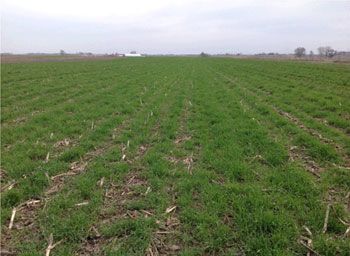 Cereal rye cover crop following corn stover harvest.
Cereal rye cover crop following corn stover harvest.
In recent years, interest in adding cover crops to corn and soybean cropping systems has increased as their potential benefits have become more widely recognized. Cover crops offer opportunities for improving soil quality and crop production efficiency, but they can also add new management challenges and risks. This article provides a general introduction to the benefits and management of cover crops in corn and soybean systems.
While some cover crop benefits can stand out in particular management situations or years, most are realized over time as their ongoing use improves soil quality and function (Table 1). Cover crops are best viewed as a long-term investment in soil productivity. The specific benefits of a cover crop also depend on the species and growing environment. For example, while legume cover crops can fix valuable nitrogen (N) for a subsequent corn crop, they generally take longer to establish than grasses in the fall and are less well suited for scavenging nutrients, suppressing weeds and protecting the soil from erosion. Selecting the right cover crop for your farming operation begins by identifying the specific functions you want the cover crop to provide.
Table 1. Potential benefits of cover crops in corn and soybean cropping systems.
| Potential Benefit | Description |
|---|---|
| Retain Soil Nutrients | Cover crops scavenge soil nutrients as they grow and ultimately release them for following crops to use. This reduces the potential for nutrient losses, especially N. |
| Prevent Soil Erosion | Cover crops help hold soil in place, reduce crusting and protect against erosion due to wind and rain. |
| Build Soil Organic Matter | Cover crop biomass contributes to soil organic matter, which helps to improve soil structure, water infiltration, and water-holding and nutrient-supply capacity. |
| Break Soil Compaction | Cover crop roots can act as “living plows," breaking up compacted soil layers. Cover crop shoots can also help protect the soil from the impact of heavy rains. |
| Add Nitrogen | Leguminous cover crops fix N as they grow. This N mineralizes after the cover crop is terminated and becomes available for use by future crops. |
| Conserve Soil Moisture | Cover crop residues increase water infiltration and limit soil evaporation. This helps to reduce moisture stress during drought conditions. |
| Suppress Weeds | Cover crops shade the soil, which can reduce weed germination and growth. Some cover crops also have an allelopathic effect on weeds. |
| Provide Additional Forage | In some areas, it may be possible to graze, hay or chop cover crops before terminating in the spring. |
The most commonly used cover crops fall into 1 of 3 broad groups based on species, potential benefits and management considerations. Key aspects of these 3 groups are described below. A future article will provide regional guidelines for cover crop species selection.
Grasses, including winter cereals such as rye, wheat, barley and triticale, are the most widely used cover crops in corn and soybean cropping systems. Winter cereals are typically planted in late summer through late fall and produce a small to moderate amount of root and above-ground biomass before going dormant in the winter. Vigorous growth resumes in early spring, and large amounts of biomass are produced by mid to late spring.
In some instances, winter cereals produce more biomass than is easily managed prior to planting the next grain crop. For this reason, some growers prefer non-winter-hardy cereals like oats, which establish rapidly in the fall, but winterkill and leave behind little residue to manage in the spring.
Annual ryegrass is another option if spring residue levels are a concern. Annual ryegrass is a bunch-type forage grass that produces less above-ground biomass than winter cereals but more root biomass. Annual ryegrass is slower to establish in the fall compared to winter cereals and must be seeded by mid-September in most locations if it is to survive the winter. Because it produces a large amount of shallow root biomass, annual ryegrass is a good fit for no-till systems.
In general, grass cover crops are well suited for:
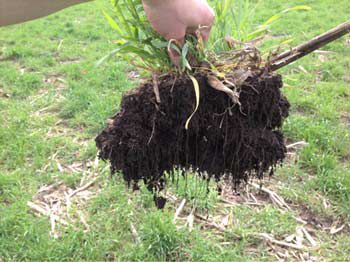
Figure 2. The extensive fibrous root system produced by grass cover crops makes them well suited for stabilizing soil, scavenging N and building soil organic matter.
Legumes are valued as cover crops primarily for their ability to fix N. Common legumes used as winter cover crops in corn and soybean cropping systems include hairy vetch, field pea, lentil, crimson clover, red clover and berseem clover. Legumes can be seeded in early summer through early fall but in many regions must be planted earlier than cereals to survive the winter. The amount of N added by legumes varies among species but is directly proportional to the amount of biomass produced. For this reason, spring management of legume cover crops can involve a trade-off between early corn planting and waiting for more biomass and N production by the legume. A future article will provide guidelines for estimating N credits from legume cover crops.

Figure 3. Legume cover crops like field pea can provide valuable N additions for a following corn crop.
Brassica cover crops have grown in popularity recently due to their ability to provide many of the same benefits as grasses but with residues that break down more rapidly in the spring. Certain brassicas are also becoming well known for their ability to produce a large taproot that is effective at breaking soil compaction. Common brassicas used as winter cover crops in corn and soybean cropping systems include canola, mustards, forage radish and turnip. Like most legumes, brassicas must be planted earlier than cereals in order to successfully establish and provide maximum benefits. Many brassica cover crops winterkill in locations with subfreezing winter temperatures, which helps accelerate residue decomposition in the spring.
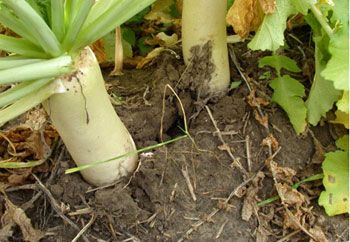
Figure 4. Forage radish produces a large taproot that can help remediate soil compaction.
Pure Stands vs. Mixtures
Mixtures of 2 or more cover crops are often superior to a single species. Grass-legume mixtures can be particularly advantageous because they combine the benefits of both – quick soil cover and N scavenging by grasses and N additions by legumes. The presence of N-rich legume residues can also help break down grass residues more quickly in the spring. Disadvantages of mixtures can include increased seed cost and more complicated management. For example, the best time to seed or terminate 1 crop in a mixture may not be the best time for another.
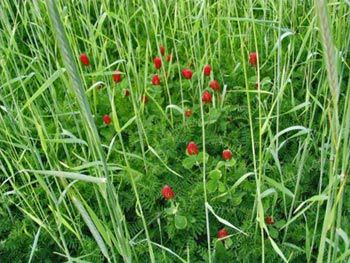
Figure 5. A mixture of rye and crimson clover can provide quick soil cover in the fall along with N credits for a subsequent corn crop.
Establishment is one of the primary management challenges associated with the use of winter cover crops in corn and soybean cropping systems. The best time and method of planting depends on the cover crop, the local environment and the farming operation. A future article will provide seeding rate recommendations for various cover crop species and seeding methods.
There are 3 windows of time each year (relative to corn and soybean growth) when winter cover crops can be seeded:
In-season seeding into standing corn and soybeans can be an effective establishment method for certain cover crops in short-season environments. In general, legumes, brassicas and other small-seeded species with extended seedling growth are candidates for in-season seeding. Planting cereals and other large-seeded cover crops far in advance of corn and soybean maturity is not recommended, as these species have a higher initial light requirement. If seeding occurs prior to layby, cover crops can be planted with an N side-dress applicator or by attaching seed boxes to a row cultivator. Specialized, high-clearance or aerial seeding equipment is required if cover crop seeding takes place after canopy closure.
Seeding at physiological maturity can provide additional time for establishing grasses and grass-legume mixtures in central and northern locations. As the grain crop dries down, sunlight breaks through the canopy and improves conditions for germination and early cover crop growth. Seeding cover crops into mature corn and soybeans requires high-clearance or aerial seeding equipment.
Postharvest seeding simplifies the planting process but can restrict cover crop options and in some years and locations, reduce establishment success. In areas with a longer growing season or in cases where corn is harvested for silage, most grass and legume cover crops can be successfully planted following crop harvest. In northern locations, winter small grains are best suited for postharvest seeding. Grain drills, row crop planters, broadcast seeders and fertilizer floaters can all be used to seed cover crops following grain crop harvest.
Numerous methods can be used to seed winter cover crops. The best method for any given situation depends largely on the time of seeding, but cover crop species and farming operation considerations are also important factors. Listed below are 5 of the most common methods for seeding winter cover crops into corn and soybeans.
Grain drills are a reliable method for seeding cover crops after grain crop harvest. Many grain drills include legume and fertilizer boxes that facilitate planting mixtures. Consult the owner’s manual or contact your equipment dealer for seeding rate settings. Although most drills include settings for common cover crops, it is a good idea to check the calibration prior to planting, especially when seeding mixtures.
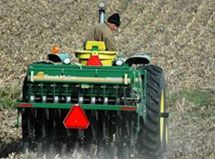
Figure 6. Drilling a cover crop mixture into corn stubble.
Broadcast seeding followed by shallow incorporation or rolling is a common method for seeding cover crops after grain crop harvest. Cover crop seed can be broadcasted using an air seeder or mixed with fall fertilizer and applied with a floater. Check seed distribution when broadcasting cover crops to help ensure even stands. Increased seeding rates are recommended for broadcast seeding compared to drill seeding, though this varies by species. Consult your cover crop seed dealer for specific rate recommendations.
Row crop planters can be an efficient method for seeding cover crops, but require additional attachments to accommodate small-seeded cover crops. Seeding rates can be reduced by up to 50% for a row crop planter compared to a drill, due to superior seed-to-soil contact, depth control and seed spacing. Special seed plates and brushes are often required to plant cover crops with a row crop planter that is set up for larger corn and soybean seeds. Grain sorghum plates often work well for cover crop seeds. Consult your equipment dealer for specific planter recommendations.
Aerial or high-clearance seeding equipment is required to seed cover crops into standing crops. Aerial seeding using an aircraft modified with a seed disperser has gained popularity in recent years due to its ability to cost-effectively seed a large number of acres in a timely manner. Although not widely available, some growers have converted high-clearance spraying and detasseling equipment into cover crop seeders. Aerial and high-clearance methods require higher seeding rates compared to other establishment methods; in some cases, 50% more seed is recommended relative to drilling. Consult your cover crop seed dealer or aerial applicator for specific rate recommendations.

Figure 7. A high-clearance sprayer modified to seed cover crops into standing corn. Image courtesy of Sarah Carlson.
Manure slurry seeding involves mixing cover crop seed with liquid manure and applying it in the fall. Although this seeding method is not a fit for all farming operations, it can be an efficient method where manure and slurry application equipment are available. Moisture and nutrients in manure promote rapid cover crop growth, which in turn prevents loss of manure N. Although manure slurry seeding can be used for a variety of cover crops, it is generally best suited for grasses, which are well adapted for establishing quickly and scavenging manure nutrients in the fall.
Grass and brassica cover crops require 30 to 60 lbs/acre N to achieve full growth potential. Most corn and soybean fields will have sufficient residual soil N in the fall to meet this need. Consider applying supplemental N fertilizer if planting cover crops on sandy soils or if the cover crop is intended to provide a significant source of spring forage.
Generally 4 methods are used to terminate cover crops: winterkilling, tilling, mowing and herbicides. Each method has advantages and limitations. For example, winterkilling is a highly effective termination method but only applicable to certain cover crops. Similarly, while tilling legumes can help increase N availability, it is less desirable for grasses that produce much greater quantities of low-N biomass. Due to simplicity and efficacy, many growers prefer to terminate cover crops using herbicides. Consider the following when terminating cover crops with herbicides:
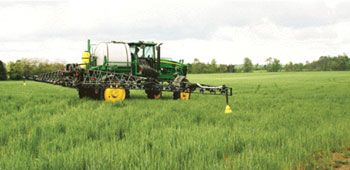
Figure 8. Terminating cover crops at an early growth stage reduces the risk of them becoming a weed in the next grain crop.
Research studies on cover crop effects on grain crop yields have reported a range of responses, depending on environment, cover crop species and management. Yield effects can also differ between corn and soybeans. A review of 37 cover crop trials conducted in the U.S. and Canada revealed broad trends regarding the impacts of cover crops on corn yield (Figure 9).

Figure 9. Corn yield response to winter cover crop based on cover crop species and region. Black points indicate average yield response, and bars represent yield response range. Results are adapted from Miguez and Bollero (2005).
Generally, legume cover crops and grass-legume mixtures are more likely to have a positive effect on corn yield than grasses alone. While this difference is not universal, it is likely to hold true across a range of locations and management scenarios. Grass residues break down more slowly in the spring and are more likely to interfere with early corn growth than legume residues, which break down rapidly. Additionally, because legumes add N, they are more likely to have a direct, positive effect on corn growth and yield.
Regional differences in corn yield response to cover crops highlight the importance of soil and climatic factors. Cover crops are more likely to have a positive effect on corn yield in southern and eastern locations than in northern locations. This is likely a result of more mild spring conditions in the South and East, which reduce the risk of delayed cover crop termination and interference with early corn growth. Soil organic matter levels are also generally lower in southern and eastern locations, which amplifies the positive impact that cover crops can have on corn yield through increased soil organic matter.
The effects on yield of specific cover crops often vary by location and differ between corn and soybeans. For example, a 4-year, on-farm study in Iowa demonstrated that a cereal rye cover crop was more likely to benefit soybeans than corn in this region (Figure 10).
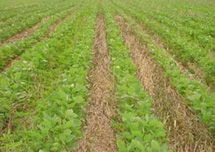
No-till soybeans following cereal rye cover crop.
Cover crops can provide habitat for certain corn and soybean pests, including seedcorn maggot, wireworm, armyworm, black cutworm, white grubs and slugs. In general, these early season pests are attracted to high residue levels on or in the soil. Early cover crop termination and effective at-planting residue management are the best ways to reduce the risk of pest damage as a result of cover crops. Additional insecticide applications may be required if planting into a standing cover crop or within 3 weeks of cover crop termination. Seed-applied insecticides are effective in controlling many early season corn and soybean insect pests.
Cover crops can also influence certain non-insect pests. For example, legume cover crops can serve as a host for soybean cyst nematodes, while grass cover crops do not.
Getting the greatest benefit out of cover crops requires that they be managed with a similar level of intensity as corn and soybeans. Selecting the right cover crop for your farming operation begins by identifying a management goal, such as increasing soil organic matter or improving spring weed suppression. Start out by testing a cover crop on a single field, and expand as you gain management experience.
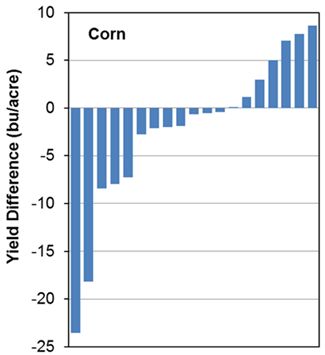

Figure 10. Corn and soybean yield response to a cereal rye cover crop in a 4-year, on-farm trial in Iowa. Each bar represents the cover crop yield effect at 1 location in a single year. Results are adapted from Carlson (2013).
Carlson, S. 2012. Winter rye cover crop effect on grain crop yields: Year 4. Practical Farmers of Iowa. Ames, Iowa.
Miguez, F.E. and G.A. Bollero. 2005. Review of corn yield response under winter cover cropping systems using meta-analytic methods. Crop Science. 45:2318-2329.
Carlson, S. 2012. Winter rye cover crop effect on grain crop yields: Year 4. Practical Farmers of Iowa. Ames, Iowa.
Miguez, F.E. and G.A. Bollero. 2005. Review of corn yield response under winter cover cropping systems using meta-analytic methods. Crop Science. 45:2318-2329.